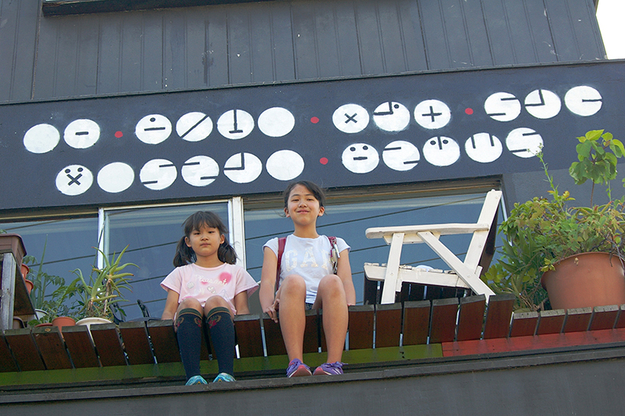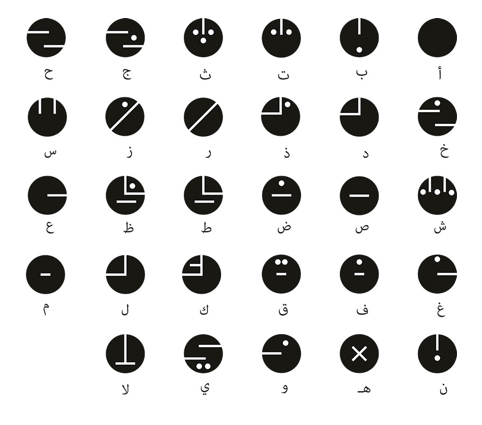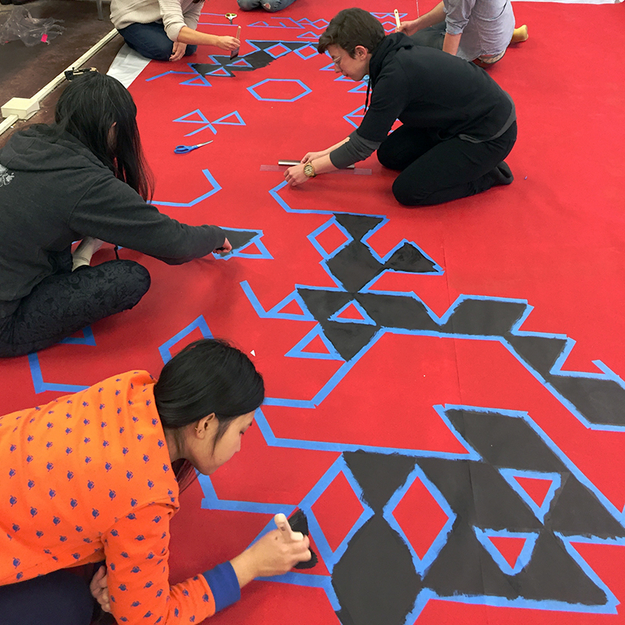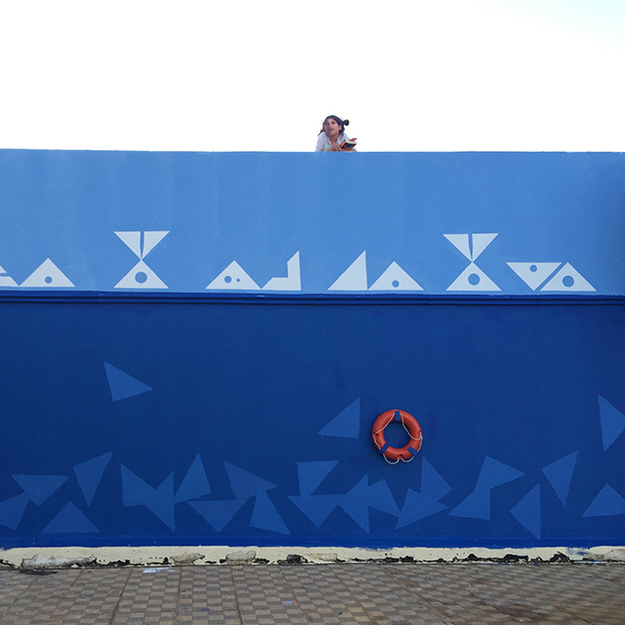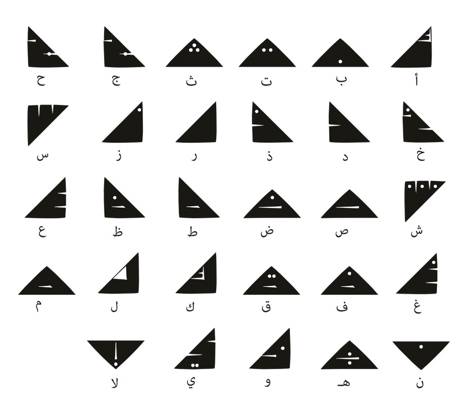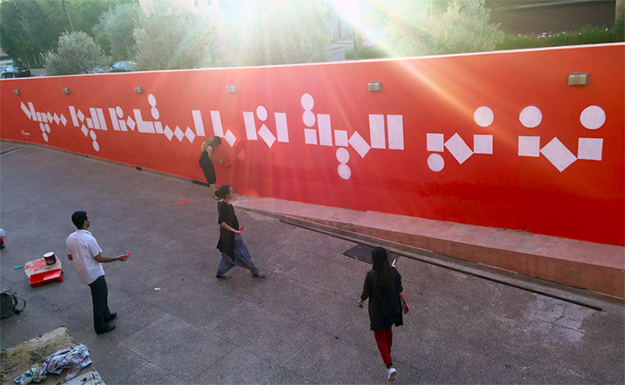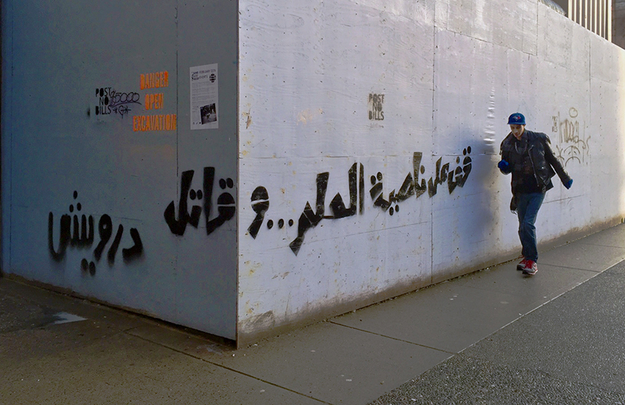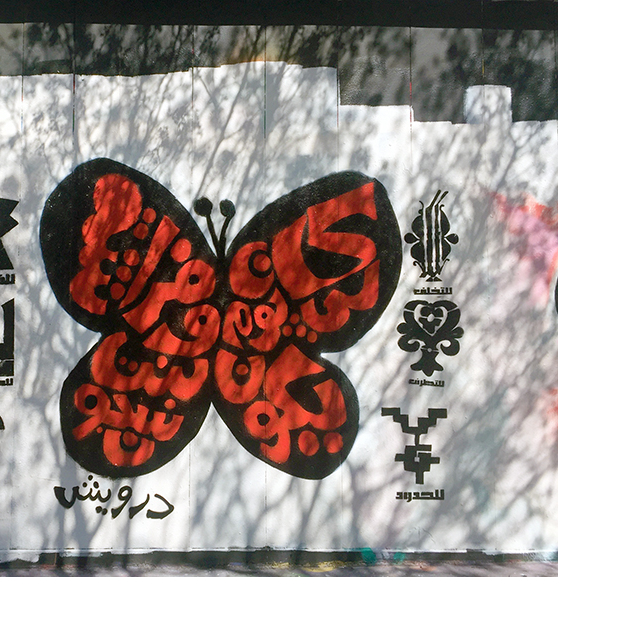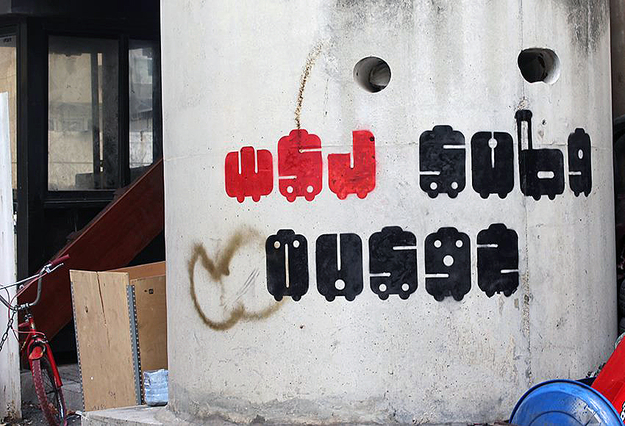Part of the Multiple Baselines series
Bahia Shehab likes to advance along a wide front. At the age of 38, she managed to collect a Bachelors degree in graphic design from The American University of Beirut, a Masters degree in Islamic Art History from The American University in Cairo, and soon a PhD degree from Leiden University that completes her academic education. But do not think for one moment that the academic world is her major interest. It is only one aspect of her career so far. Bahia likes to call herself an art historian, writer, educator, artist and designer. What else is there? She likes to maintain two nationalities both Lebanese (by birth) and Egyptian (by choice).
She worked for many years in advertising, set up a design program at AUC, had international exhibitions of her work as an artist, is a laureate for the Prins Claus Award 2016, was nominated for the V&A’s Jameel Prize 4, did a TED talk, became a street artist during the regime change in Egypt, and now receives regular invitations for street art projects all over the world. She gave birth to two daughters. She is extremely warmhearted, generous and seems to have great fun in buying an unstoppable stream of presents for her friends. Can one be more Arab?
Bahia did relatively few design jobs, for the simple reason that the Arab world regrettably does not provide many opportunities. But for the few she did, she managed to come up with attractive solutions that are both embedded in the Arabic calligraphic tradition as well as making use of today’s visual vocabulary. Maybe one anecdote about a design competition Bahia was involved in is telling about Arabic clients and the designers working for them. An Arab company selling expensive bags worldwide issued a design competition for Arabic initials that help personalize their bags. A young Dutch designer - who neither reads nor writes Arabic - won the competition, although the jury thought other designs offered more advanced solutions. However, the client wanted to communicate with the design of the letters ‘the way the world recognizes Arabic provenance.’ Bahia submitted three designs she created together with her daughters, sitting on the kitchen table, the weekend before the deadline. The designs consisted of highly abstract and simple letters that are at the same time playful and charming. These designs generated her interest in producing more lettering and fonts that she applies in recent street art projects.
What makes her designs so fresh and new is that there is an undeniable link to the very rich Arabic calligraphic tradition. However, her designs move far away from traditional type design. They are much more related to the world of emoticons and icons, which today have become a universe of their own. Digital texts are now often a mixture of both letters and pictograms. Bahia should be part of this Multiple Baseline series because she opened up a branch of type design in which she operates with a level of causality and fun that give an unexpected lightness to the often serious and tedious work of type design.
Edo Smitshuijzen: Why did you choose a design education?
Bahia Shehab: I chose to study design because nobody knew what graphic design was in the early nineteen-nineties in Beirut and I found that quite interesting. More than twenty years later and still not many people in the Arab world know what graphic design is, which I still find quite interesting.
ES: What did you learn during your educational trajectory?
BS: In the past two decades I came to the understanding that for the Arab world to develop it needs to document, preserve and understand its history so nations can design a better future. Ready-made packaged solutions that do not relate to our identity or history are not going to move us forward.
ES: Who has been your inspiration for each of the different kinds of work you do?
BS: My heroes are the unknown scribes and artisans of old Islamic empires who worked, created, and lived without the misconception that they are at the center of the universe. What they created as designers, calligraphers and artists was a manifestation of the beauty and greater concepts that unite us as humanity. For example, visuals like Arabesque, the repeating unit that reflects the infinite, became very popular in buildings across the Islamic world both public and private. The names of these designers cannot be found on any of their artworks because they knew that their reward will come from the pleasure of creating a timeless work of art. Their work is what inspires me.
ES: It is obvious that you have spent a lot of time looking at pictures of Arabic calligraphy. Which styles have inspired you most?
BS: I did study Arabic calligraphy in different dynasties and in different parts of the world, under different patrons. I appreciate the beauty, elegance and utility of the scripts developed across the Islamic empire but the closest one to my heart is the Kufic script because it developed in so many different and rich directions that it is in a world of its own. We have yet to develop new terms to label all of the different forms of Kufic that were created historically.
ES: What do you think is the best strategy for advancing design and art in the Arab world?
BS: Education is the best strategy for advancing design and art in the Arab world. Educating clients on what good design is and why it is important and educating society on the importance and usefulness of design. What is interesting about living in developing countries is that you can look at other case studies from developed countries and choose what works for you and apply it, it is like taking short cuts but customizing them to fit your locality. You are learning from the other so you can develop better-suited solutions for your own problems faster. Sometimes your problem is so unique that only you can solve it. But we still have a very long way to go because designers on their own cannot create the needed change.
ES: How do you feel you can contribute in the best way to this strategy?
BS: By building more programs and collaborations in the region that can teach creative thinking, because the problems that we live in cannot be solved by the same brains that created them. We need to create a new breed of social designers aware of the current problems and willing to invest the time and the effort in changing what is around them.
Designers cannot work without an environment to design in. Designers will not work if there are no clients, no governments and public entities willing to invest in good design. We need to create a healthy work environment for designers to produce and flourish. We have the designers; we have had programs in the region for over twenty-five years creating designers with brains that can solve problems. Now it is time for us to create environments for these designers to be productive, that will not happen without collaborations between institutions and educated and well-informed clients who demand good design solutions. There is no supply without demand. We need to make society understand that designers are problems solvers, just like doctors, clients have to trust their judgment and consult with them to develop better solutions.
ES: Where do you want to be in 20 years? How will the profession of design look like by then?
BS: I hope that in twenty years we will have a thriving Arab design community. That design will become mainstream and our governments and major institutions will adopt creative thinking as a main strategy in their operations. I hope that we will develop Masters and PhD programs for design and design thinking that will foster intellectual production, publications and reflections on the topic. Forty percent of people in the Arab world are under the age of twenty, I believe that design can help build them a better future. I wish that in twenty years we can hand them a better world to live in.
